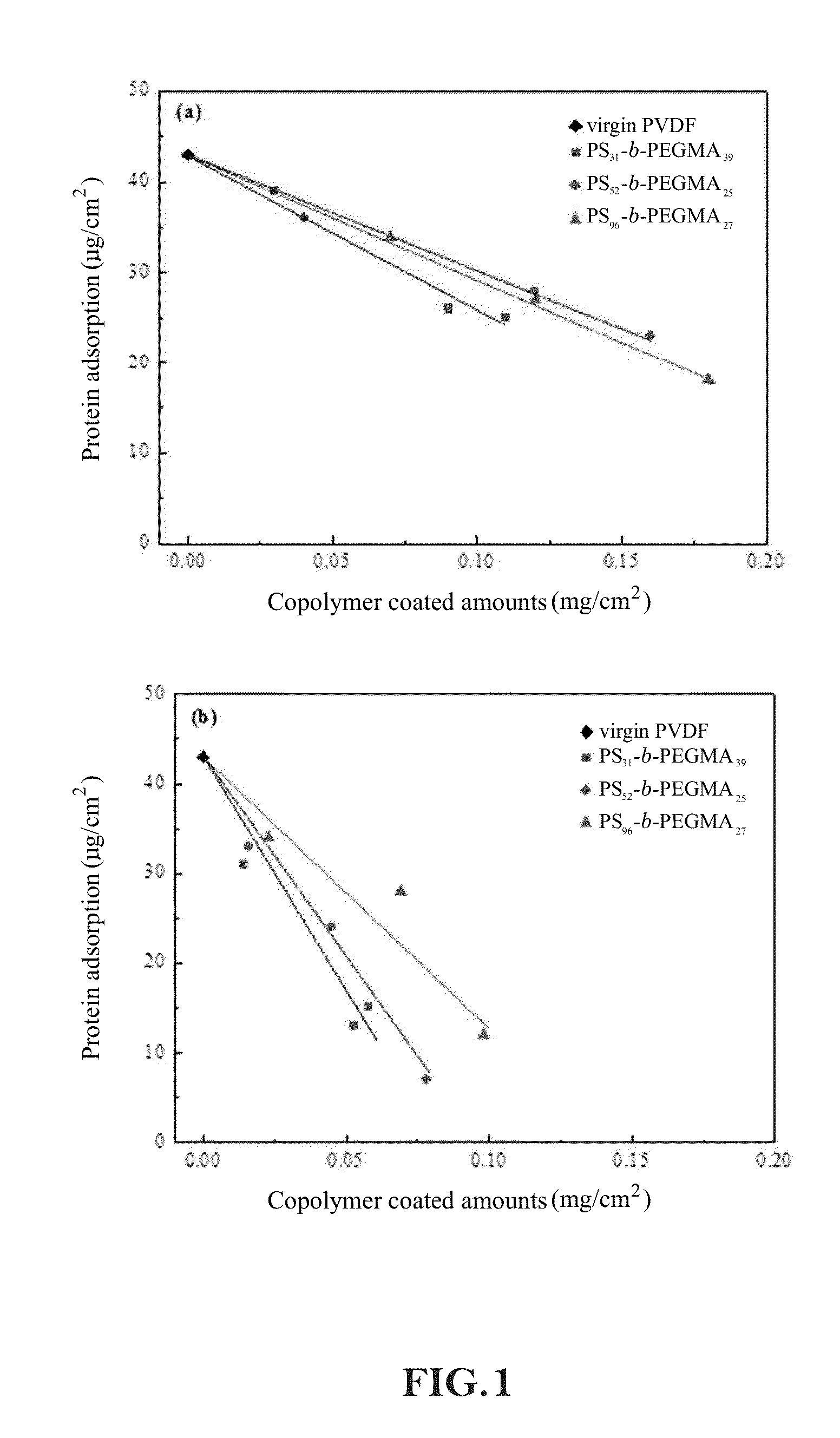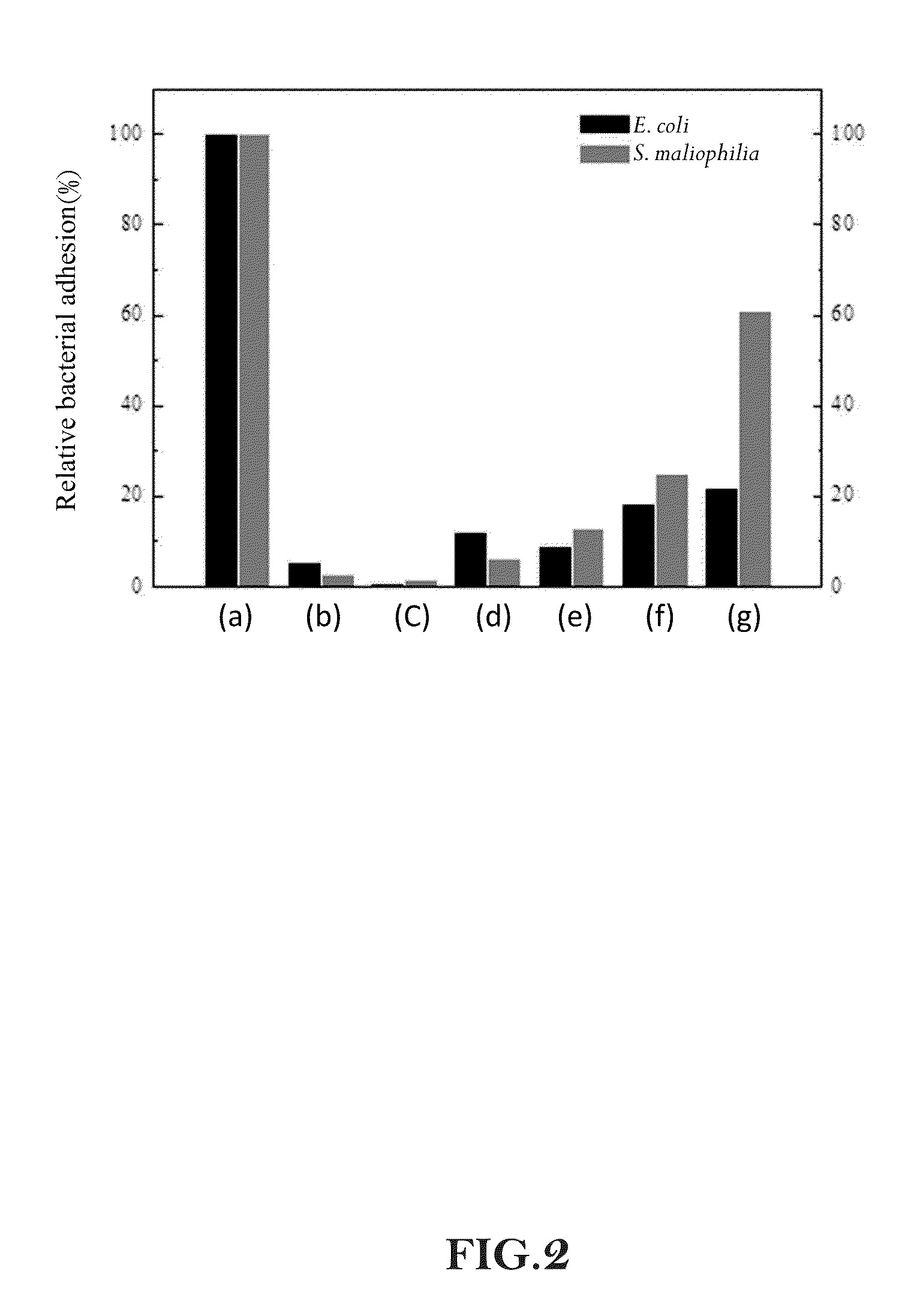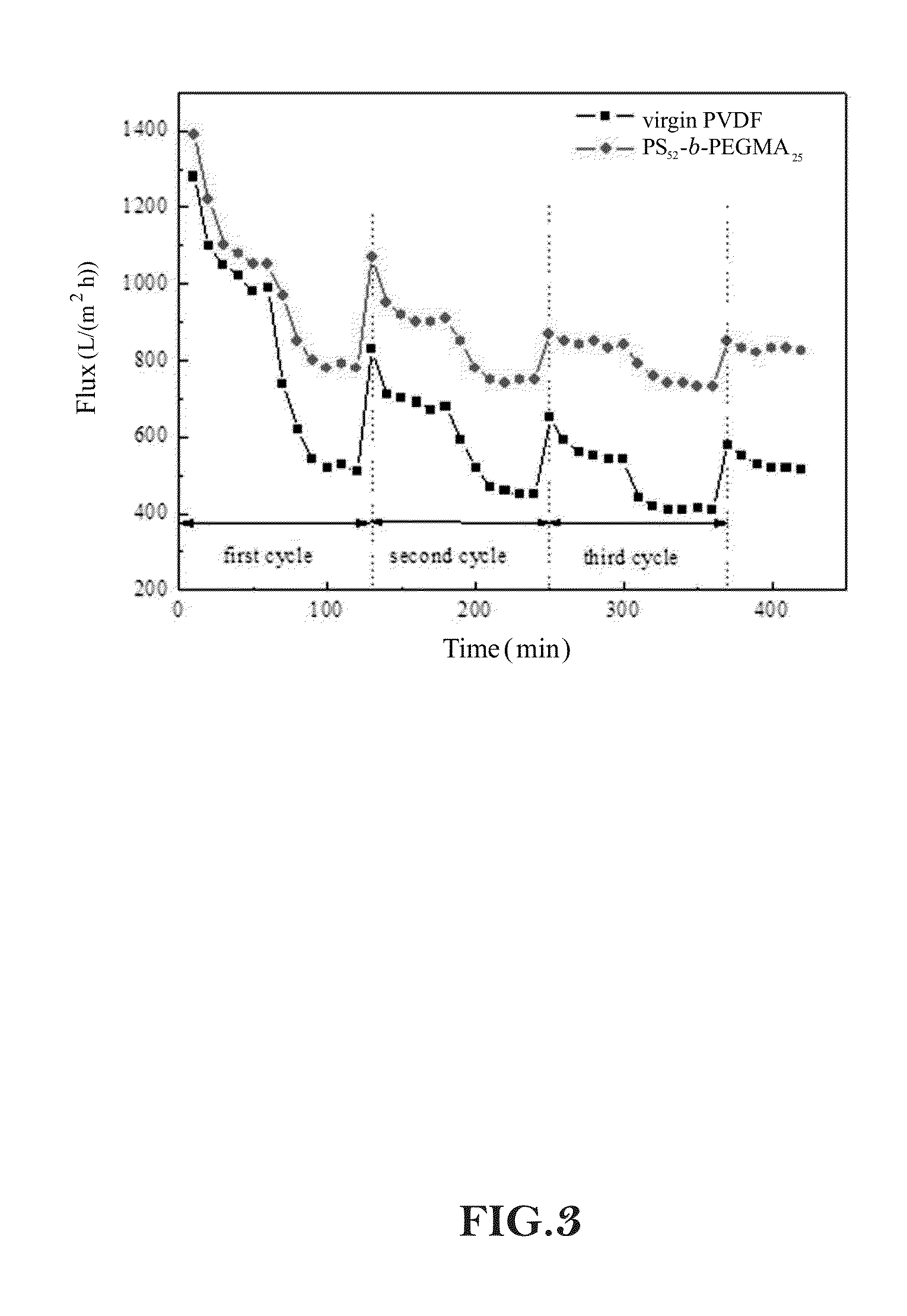Antibiofouling Composition, Antibiofouling Membrane And Method For Forming The Same
a technology of coating composition and antibiofouling membrane, which is applied in the direction of antifouling/underwater paint, pretreatment surface, separation process, etc., can solve the problem that the materials that meet the rules of coating agent or coating composition may not have effective antibiofouling ability, and the biomolecules are not anticipated to have nonspecific adsorption on the surface of materials in use, etc. problem, to achieve the effect of excellent antibiofouling ability, excellent coating stability and antibio
- Summary
- Abstract
- Description
- Claims
- Application Information
AI Technical Summary
Benefits of technology
Problems solved by technology
Method used
Image
Examples
example 1
Preparation of Diblock Copolymers
[0049]At first, a prepolymer having the PS (polystyrene) block is synthesized by atomic transfer radical polymerization of a monomer having at least one hydrophobic moiety and a macromolecule under existence of CuBr / 2,2′-bipyridine (CuBr / bpy) and methyl 2-bromopropionate (MBrP) under nitrogen in a dry box. For the polymerization of PS block with different molecular weights, styrene (42.2 mmol) was polymerized under bulk using [styrene] / [MBrP] / [CuBr] / [bpy]=30 / 1 / 1 / 2, 50 / 1 / 1 / 2, and 90 / 1 / 1 / 2 at 120° C. After 24 h, 1H NMR analysis indicated that 99% of the styrene monomers had been polymerized. The resulting reaction solution diluted with 45 mL of THF was passed through an aluminum oxide column, precipitated into 300 mL of methanol, and redissolved into THF repeatedly three times to remove residue ATRP catalysts. This purification protocol resulted in the loss of up to 30% styrene homopolymer due to adsorption. After solvent evaporation, the copolymer was...
example 2
Preparation of Random Copolymers
[0051]Poly(styrene-random-poly(ethylene glycol) methacrylate) (PSx-r-PEGMAy) was also synthesized using ATRP method under nitrogen in dry box. To control the similar ratios of PS / PEGMA in the PS-r-PEGMA compared with PS-b-PEGMA, styrene (9.6 mmol) was polymerized in 10.0 mL of THF with different molar mass ratios of PEGMA as the comonomers using [styrene] / [PEGMA] / [MBrP] / [CuBr] / [bpy]=25 / 6 / 1 / 1 / 2, 30 / 15 / 1 / 1 / 2, and 50 / 50 / 1 / 1 / 2 at 60° C. After 24 h, 1H NMR analysis of the reaction solution indicated that 60%-65% of the total styrene and PEGMA monomers had been polymerized. The purification process of the prepared PS-r-PEGMA followed the same protocol of the previous description of the prepared PS-b-PEGMA. From the combination of THF GPC analysis, the molar mass ratios of PS / PEGMA in the prepared random copolymers were controlled with a set of 0.9 (PS47-r-PEGMA52), 1.7 (PS20-r-PEGMA12), and 3.7 (PS26-r-PEGMA7) and a range of Mw / Mn between 1.40-1.50.
example 3
Preparation of Antibiofouling Compositions
[0052]The copolymers prepared in examples 1 and 2 are dissolved in DMAc with a ratio (copolymer / solvent) of 0.1-10 mg / mL to constitute antibiofouling compositions.
PUM
| Property | Measurement | Unit |
|---|---|---|
| molecular weight | aaaaa | aaaaa |
| concentration | aaaaa | aaaaa |
| surface area | aaaaa | aaaaa |
Abstract
Description
Claims
Application Information
 Login to View More
Login to View More - R&D
- Intellectual Property
- Life Sciences
- Materials
- Tech Scout
- Unparalleled Data Quality
- Higher Quality Content
- 60% Fewer Hallucinations
Browse by: Latest US Patents, China's latest patents, Technical Efficacy Thesaurus, Application Domain, Technology Topic, Popular Technical Reports.
© 2025 PatSnap. All rights reserved.Legal|Privacy policy|Modern Slavery Act Transparency Statement|Sitemap|About US| Contact US: help@patsnap.com



